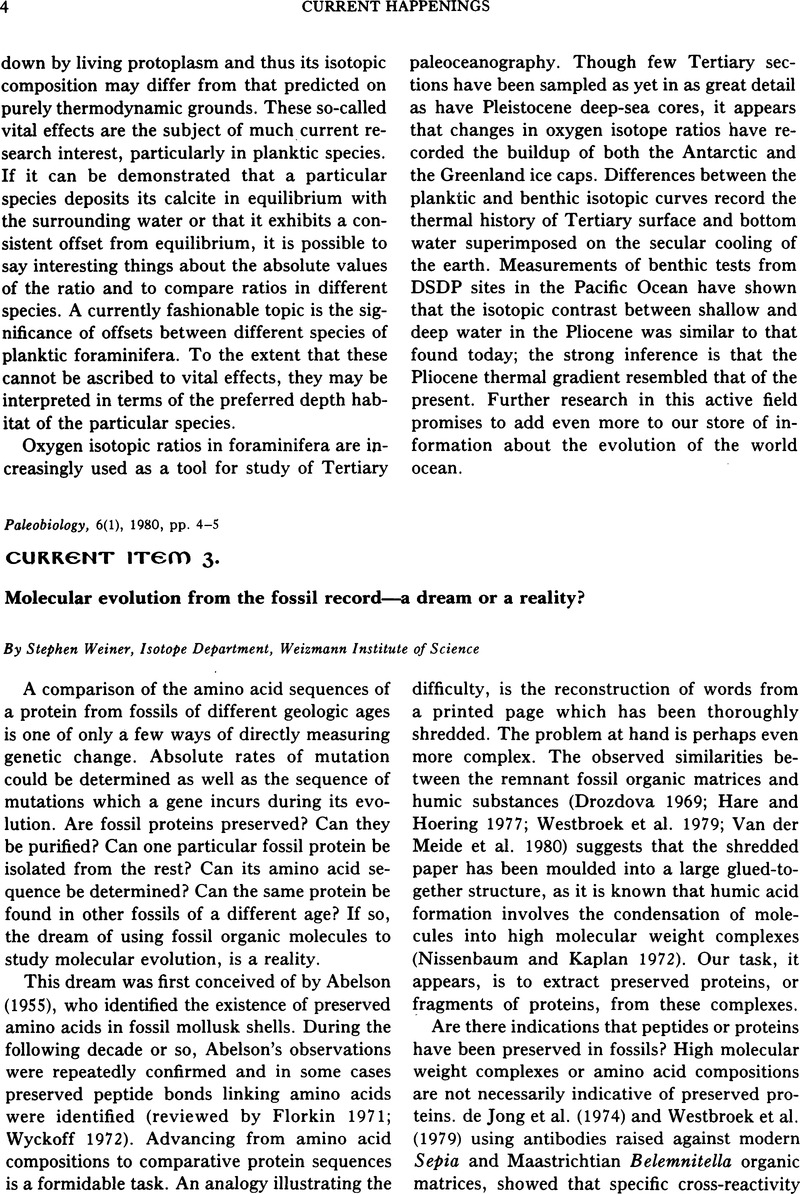Crossref Citations
This article has been cited by the following publications. This list is generated based on data provided by Crossref.
Tuross, N.
Behrensmeyer, A.K.
Eanes, E.D.
Fisher, L.W.
and
Hare, P.E.
1989.
Molecular preservation and crystallographic alterations in a weathering sequence of wildebeest bones.
Applied Geochemistry,
Vol. 4,
Issue. 3,
p.
261.
Schweitzer, Mary Higby
and
Cano, Raúl J.
1994.
Will the Dinosaurs Rise Again?.
The Paleontological Society Special Publications,
Vol. 7,
Issue. ,
p.
309.
Jones, Elizabeth D.
2018.
Ancient DNA: a history of the science before Jurassic Park.
Studies in History and Philosophy of Science Part C: Studies in History and Philosophy of Biological and Biomedical Sciences,
Vol. 68-69,
Issue. ,
p.
1.



